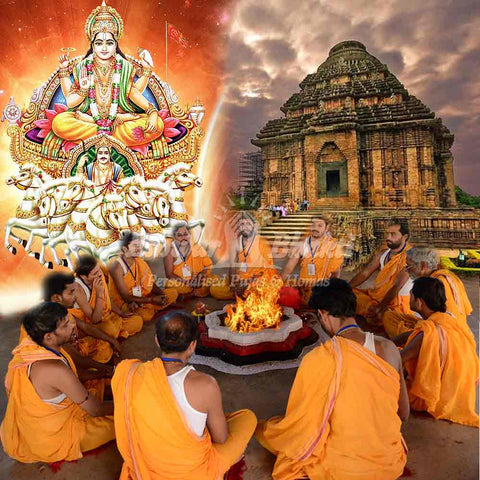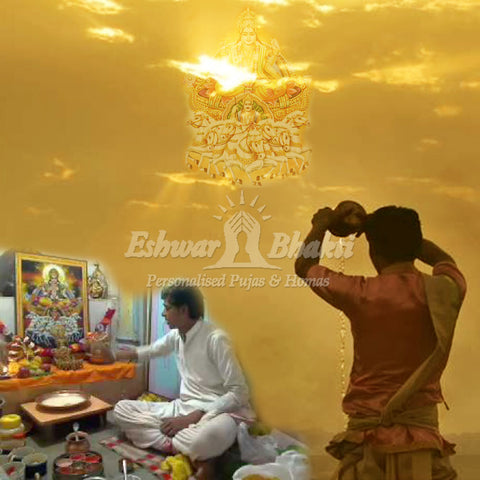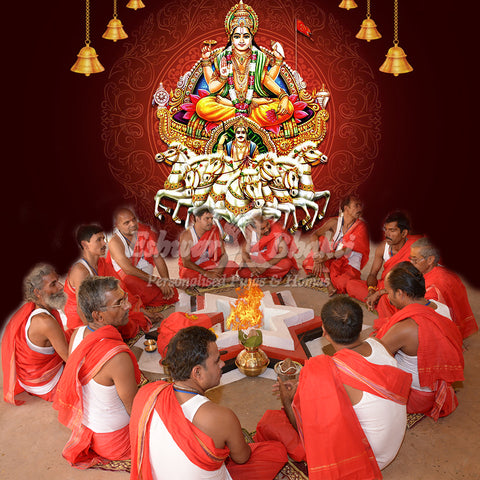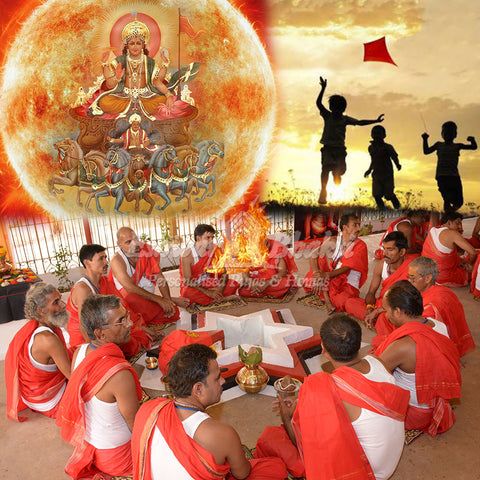Lord Surya
 There are few gods who have been common in many cultures. Sun God is one of them. Sun god, also known as 'Surya deva' in Hinduism has been worshipped by most of the cultures. It is said that Surya is one of those few gods who could be seen with eyes. That's the reason, Surya deva occupies a very respected position in Hinduism. We are going to talk about various aspects related to Surya deva in detail in this article.
There are few gods who have been common in many cultures. Sun God is one of them. Sun god, also known as 'Surya deva' in Hinduism has been worshipped by most of the cultures. It is said that Surya is one of those few gods who could be seen with eyes. That's the reason, Surya deva occupies a very respected position in Hinduism. We are going to talk about various aspects related to Surya deva in detail in this article.
Origin: In Hinduism, Surya deva has been identified with many names such as Aditya, Arka, Ravi, Prabhakar, etc. He first finds mention in the Rig Veda. He is also mentioned in subsequent Vedas and Upanishads. Surya deva is one of the few Vedic era gods who is still worshipped to date.
Although there are many worshippers of the Sun lord, there aren't many temples dedicated to Him. But His carvings are found in all ancient temples in India that include Ellora caves and Kailasa temple. According to scholars, once Surya deva too had many temples dedicated to him. However, most of them were destroyed by the invaders and very few of them still remain. Subsequent to this, worship of Surya declined and very few temples dedicated to Him were built. Surya deva is also mentioned in various Puranas and Hindu epics Ramayana and Mahabharata.
Significance: The Sun has always been a symbolization of knowledge, power, and clarity. He is seen as the dispeller of darkness and to illuminate one's life. There are many hymns dedicated to the lord where the Sun is being prayed to bring the light of awareness and knowledge in one's life.
As true with any other god, Sun God has also been portrayed in various ways. As Sun God is common in Greek and some other cultures as well, their portrayal too has influenced Indian depiction of the Sun god.
In most of the illustrations, Sun is seen riding a chariot pulled by 7 horses. In some illustrations, there are goddesses Usha and Pratyusha on his sides and they could be seen shooting arrows to fight the darkness. That's how the Sun god became the symbol of victory of light over darkness.
Those born under the lineage of Sun are called Suryavanshi or solar dynasty or the Ikshavaku dynasty. The important personalities belonging to this lineage are: Sage Vashistha, Mandhatri , Muchukunda , Ambarisha , Bharata Chakravartin, Bahubali, Harishchandra, Dilīpa, Sagara, Raghu, Dushratha, Lord Rama and Pasenadi.
Worship of Sun god: Sun god was one of the most worshipped deities of the Vedic era. It is said that He is one of the few gods who could be seen with naked eyes. That's the reason many Vedic rituals centered around the Sun god himself. Even the highly regarded Gayatri Mantra mentions Him.
However, with time, his worship deteriorated and he was replaced with other popular gods. Still, He is worshipped by many groups in India and Nepal. The worshipers of Surya deva were known as Shauryas. He is even revered by the Buddhists and finds mention in their texts.
In South India, the Sun god is worshipped during the Pongal mainly celebrated by the Tamil people. This festival is celebrated during the time of harvesting and is a very grand event in southern India.
Surya Deva and the Nava Grahas: If you are a Hindu, you must have heard about Nava Grahas a lot of time. They find mention in many texts and rituals associated with Hinduism. There is even a Nava Graha puja offered to them. The puja is done to mitigate any negative influence cast upon by these Grahas on an individual.
As generally conceived, Nava Grahas are not the same as nine planets according to modern astronomy. These are the Sun, Moon, Mercury, Mars, Venus, Jupiter, Saturn, Rahu, and Ketu. Rahu and Ketu are not some physical entities, they are chaya Grahas or solar and lunar shadows. Sun is the chief among Nava Grahas and also the father of Sani or Saturn.
Sun god and Yoga: Yoga gives a great emphasis to the Sun and aspects related to it in the ways we know and beyond. A solar cycle is approximately that of 12 years. And it is said that if one aligns himself with this cycle, then one becomes more balanced and many problems in life naturally come to an end.
Even, one of the most popular yoga asanas, Surya namaskar is a salutation to the Sun god. Thus, yoga recognized the importance of the Sun in one's life and incorporated elements that benefit from it.
 Temples dedicated to Surya Deva: As already mentioned before, very few temples solely dedicated to the sun god could be found today. But still, the remaining ones are worth a mention. The list of Sun temples can never be complete without mentioning the Konark Sun temple of Orissa.
Temples dedicated to Surya Deva: As already mentioned before, very few temples solely dedicated to the sun god could be found today. But still, the remaining ones are worth a mention. The list of Sun temples can never be complete without mentioning the Konark Sun temple of Orissa.
Although majority of temples have been destroyed, what still remains is a sight to behold. The Konark Sun temple is constructed as a grand chariot being pulled by the seven horses. There are 12 pairs of giant wheels on both sides of the temple. It was constructed in the 13th century. The temple is a living example of the brilliance of Indian art and architecture.
Another famous Sun temple is a limestone temple in Martand of Srinagar valley. Although, the temple lies in ruins today, once it was the center of religion and spirituality in Kashmir. According to many, it is the earliest Hindu monument to be found in Kashmir.
Summary: Sun has been one common god who has been revered across all religions and cultures. Unlike other gods, he doesn't need to be believed. He is there, he always has been. And it doesn't take great intelligence to recognize His contribution to our lives. Without Him, no life would have ever been possible on Earth.
He has been given even greater importance in Hinduism. Still, many Hindus start their day with Surya stuti or offering prayers to the Sun god. Because they know that without Sun, there is no existence, without Sun, there is no 'them'.





Comments
There is more to the sun GOD than you think
spritual and scientic relation of the suggod-surya